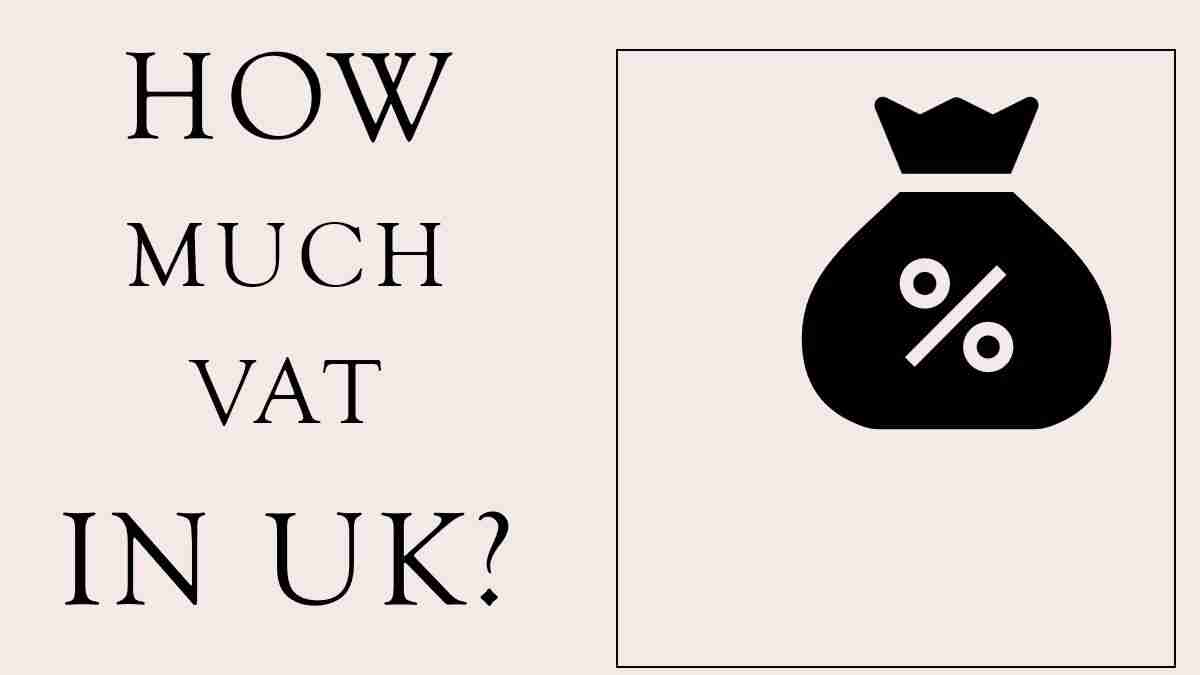Value added tax (VAT) is a consumption tax levied at each stage of production or distribution of goods and services. In the United Kingdom, VAT is an essential of the tax system, generating revenue for the government.
This article explores various aspects of VAT in the UK, including rates, exemptions, implications and recent developments.
UK VAT Calculator
UK VAT rates
There are different rates of VAT that apply to different goods and services. The VAT rates are mentioned below
- Standard rate (20%): Currently, the standard VAT rate in the UK is 20%. This rate applies to most goods and services, including electronics, clothing, entertainment, and non-essential items.
- Lower Rate (5%): A reduced rate of 5% applies to certain goods and services, including home energy (gas and electricity), child car seats, feminine hygiene products, and more. The reduced rate is aimed at essential goods more affordable which helps the cost of living for many people.
- Zero rate (0%): Some goods and services are subject to a 0% VAT rate. This does not mean that the tax rate is 0%, but rather that the rate is effectively 0%. The essential products like food, children’s clothes, books, public transport, etc.
- Exemptions: There are some goods and services that are completely exempt from VAT, such as financial services, insurance and some health services. This means that no VAT is charged on these goods, and businesses cannot claim any VAT owed on their inputs relating to exempt supplies.
How does VAT Apply?
VAT in the UK applies to both businesses and consumers:
For businesses:
- VAT Registration: If a business’s taxable turnover exceeds the VAT registration threshold, which is currently set at £85,000, they are required to register for VAT. This means they have to charge VAT on their sales and can also reclaim VAT on their purchases.
- VAT Invoice: Registered businesses must provide VAT invoices to their customers, showing the amount of VAT charged. These invoices are important for businesses and individuals to recover VAT on their expenses.
- VAT returns: Businesses are required to submit regular VAT returns to HM Revenue and Customs (HMRC), usually quarterly. These returns detail the VAT charged by them and the VAT paid on their expenses.
- Input and output VAT: Businesses can reclaim the VAT paid on their expenses, known as input VAT, from the VAT charged on their sales, known as output VAT.
For consumers:
- Increased costs: VAT is generally passed on to consumers in the form of higher prices. The standard rate of 20%, increases the cost of goods and services, impacting consumer budgets.
- Price transparency: Most goods and services in the UK are advertised with a VAT-inclusive price. This ensures that consumers are aware of the total cost in advance.
- Exempt items: Exemption of some items, such as basic foods and public transportation, helps low-income individuals and families by keeping essential items more affordable.
VAT exemption
As mentioned earlier, some goods and services are exempt from VAT. These discounts exist to ensure that essential goods and services remain affordable. However, the businesses providing exempt goods and services cannot reclaim VAT on their inputs relating to these supplies.
- Financial services: Services such as insurance, credit and some financial transactions are VAT-exempt.
- Health care: Many health services provided by the NHS are exempt from VAT. However, private healthcare providers may charge VAT on their services.
- Education: Most education services from preschool to higher education are VAT-free.
- Charitable activities: Many charitable activities are also VAT-free, as the government aims to support charitable organizations in their mission.
- Sale of land and buildings: Sales of land and buildings are exempt from VAT, although there are some exceptions, such as new or partially completed residential properties, which are subject to the standard rate of VAT.
FAQs
A new penalty-based points system has been introduced for all VAT returns submitted or paid late from 1 January 2023. This new system will replace the existing default surcharge. Late repayment returns will also attract penalty points and financial penalties.
There are 3 different rates of VAT (20%, 5%, 0%) that are added to products and services. Which one applies depends on the goods and services and how they are used.
The VAT threshold for 2023 is £85,000 and this threshold is set by HMRC each year. However, the government has confirmed that this limit will not change until 31 March 2024.
Businesses collect VAT at every stage of production, which means all buyers pay VAT.
